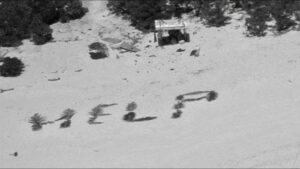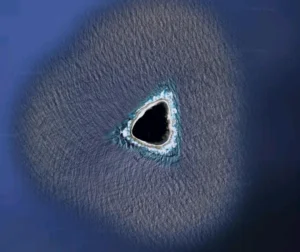In 2016, a 72-year-old woman and her dog were rescued after spending nine days lost in the Arizona desert. Her smart thinking led to the pair’s unlikely survival.
Technically their chances of getting out alive were “statistically abnormal”, said one professional survival instructor. Gila County’s wilderness covers an extensive 1,214,000,000 hectares and is the largest of the six national forests in Arizona. One thing the area doesn’t have is outstanding mobile phone coverage.
Rodgers was on her way to visit her grandchildren in Phoenix with her pet dog when her hybrid car ran out of power and gas reserves. She’d noticed a gas station sign earlier but when she turned off the main road to locate it, quickly became lost. Now out of mobile phone coverage, she and her small house dog left the vehicle and climbed several ridgelines, hunting for a cell signal to call for help.

During their nine days in the Arizona desert, Ann Rodgers and her pal survived by drinking pond water and eating berries.
Abandons her car and begins walking
“I waited until sun up the next morning hoping a truck or car, anybody, anything would go by, even a steer! I didn’t care, anything alive,” Rodgers recalled. But nothing and no one came. After two days, she abandoned her vehicle and headed for a stream she had seen from one of the ridges.
For the next nine days, Rodgers and her dog survived by eating desert plants and drinking pond water while waiting for rescue. Rodgers had read a book on the edible plants of the Southwest, which informed her choices of food.
Under normal circumstances, leaving a vehicle behind when lost is a certain way to evade rescue attempts. But this resourceful Gran came up with ways to be detected by authorities.
After they had spent three days without food, Rodger’s made a sign across the canyon floor from rocks and bones from a bleached elk skeleton, spelling out the word, “HELP”. Under one of the rocks, she put a small note outlining her predicament. At night, when the temperatures dipped below freezing, Rodgers built a fire. Her lifelong smoking habit helped her on this occasion. Then she made shelter for the pair.
“I was eating desert plants. My dog was too, diving into clover and finding all the places that were the easiest path for me to take. She was my pathfinder on that journey,” Rodgers said.

The Arizona desert can be a hard place for those who go astray, but this 72-year-old grandmother survived in good health.
When Rodgers had been missing for three days, a multi-agency search began after someone finally noticed her car on a remote stretch of road. Even with two separate helicopter searches and multiple ground searches, they found no trace of her during those first few days. A breakthrough only occurred after nine days, when a Game and Fish officer found her dog wandering in the canyon. Rescuers then spiked their aerial search efforts.
Help sign spotted
Next, they spotted the “Help” sign and handwritten note.
“The note said she had been without food for three days and that she was going to continue looking for a ranch and going downstream,” one of the rescuers said.
Shortly afterward, from the helicopter, they noticed an abandoned shelter Rodgers had made. After rounding a bend in the canyon, they saw Rodgers herself waving next to a signal fire.
“When that helicopter, that air rescue police copter landed, I just sat down and bawled,” Rodgers said. “Remarkable, remarkable, remarkable.”
She had escaped unscathed and was able to board the helicopter. Rescuers agree that after leaving the vehicle behind, she was smart to create a trackable trail for rescuers to follow.
“If it was a different season, she would not have lived,” said a survival expert. “Arizona can be a brutal state to stay alive in because we have mountains and deserts and everything in between.”
Flown to hospital for treatment, Rodgers was released later that same day.






